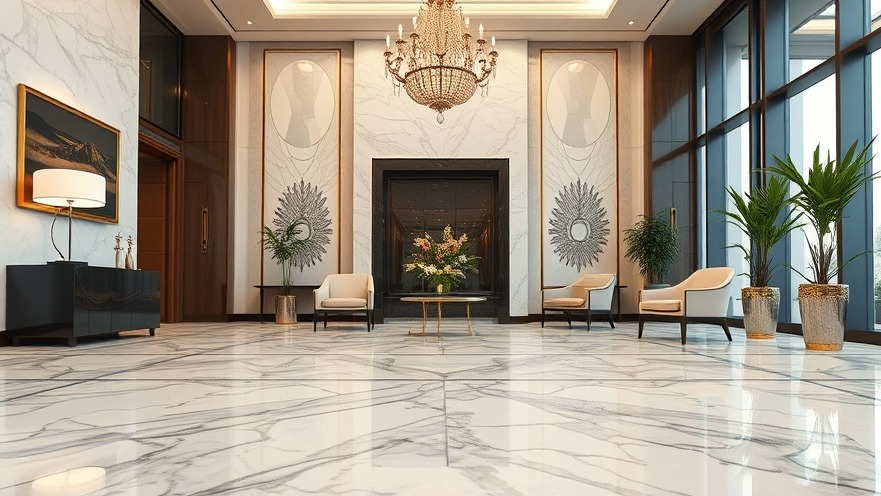
Discover the Elegance of Casalgrande Padana's Concept Outdoor Tile Collection
In the world of outdoor design, finding the right materials that blend style with functionality is crucial. Casalgrande Padana's Concept outdoor tile collection has hit the mark with an eye-catching range of porcelain stoneware tiles featuring soft, cloudy effects and subtle hints of color. This not only enhances the aesthetic appeal of outdoor spaces but also contributes to creating inviting environments that cater to the needs of digital nomads seeking comfort and efficiency.
The Aesthetic Appeal of Outdoor Workspaces
With digital nomadism on the rise, many remote workers are adapting their outdoor spaces into functional work environments. The Concept tile collection, with its mottled and textured appearance, offers a sophisticated look that complements both casual and exclusive settings. Available in four neutral shades—black, grey, white, and greige—these tiles can harmoniously blend with various outdoor furniture and décor, allowing you to create a serene workspace surrounded by nature.
Functional Features of the Concept Outdoor Tiles
One of the standout features of the Concept collection is its practicality. The 20-millimetre thick tiles come with an anti-slip surface, making them ideal for outdoor applications where safety is a priority. Digital nomads working outdoors can enjoy the benefits of ample space that these tiles provide, whether they're hosting meetings alfresco or taking calls surrounded by greenery. Moreover, the flexible installation options—laying directly on turf, sand, or gravel or adhering with adhesives—give users the versatility to configure their workspaces without compromising on design.
Creating Comfortable Outdoor Workspaces
As work-from-home arrangements evolve, outdoor areas are increasingly becoming the 'new office.' By utilizing the Concept tiles, individuals can transform patios or gardens into comfortable work zones. The speckled surfaces not only add visual excitement but also help disguise wear from everyday use, ensuring your workspace remains attractive over time. With the right ergonomic outdoor chairs and tables, remote workers can enhance their productivity while enjoying the fresh air.
Future Trends in Outdoor Design
The integration of outdoor tiles in workspace design isn't just a trend—it's a shift towards blending work with lifestyle. As more people work remotely, there's a growing demand for designs that nurture creativity and well-being. The Concept tile collection by Casalgrande Padana is a prime example of how innovative materials can elevate outdoor workspace aesthetics while ensuring practicality meets style. As we look to the future, such designs will surely inspire even more creative solutions for the modern digital nomad.
Final Thoughts
Casalgrande Padana's Concept outdoor tile collection is more than just a flooring option; it embodies a thoughtful response to the needs of today’s remote workers. As outdoor spaces continue to play a vital role in creating efficient work environments, investing in quality materials that enhance comfort and style is paramount. Whether you're hosting a brainstorming session or enjoying a quiet moment to recharge, these tiles set the stage for a perfect balance of work and leisure.
By considering how the Concept outdoor tiles can enhance your workspace, you move a step closer to creating an ideal working environment. Ready to transform your outdoor area? Explore the possibilities with Casalgrande Padana today!
 Add Row
Add Row  Add
Add 




Write A Comment